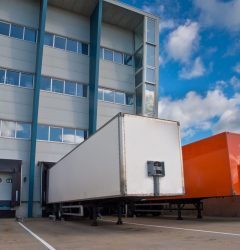15 Oct

There are many concepts in the transport industry that would be good to know. Technologies are constantly being improved to achieve customer service efficiency. In the supply chain, many positive options are possible for either party, emergencies, and others to simplify or complicate the process. As in any other industry, there are numerous pitfalls and advantages here. In each case, however, you need to be aware of what is the right action.
An important concept is the NMFC codes. They are used to classify goods. Thanks to them, it is now easier to send every day shipment. It may not be that difficult for some experienced industry professionals, but this common base provides many advantages in the tariff formation process.
What do you need to know about NMFC codes?
This article was created to explain NMFC codes. When engaging in trading, everyone should be aware of their nature, when they are used and why they are so important to each company and logistics, who defines them, etc., etc. Here are the main highlights on the topic:
What are NMFC codes?
NMFC codes are entered into the transportation and logistics business by the National Association of Road Freight and the abbreviation stands for National Truck Classification Number. Today they are applicable to any type of cargo. The main idea for them is to carry out a single mission – to guarantee fairness-based measures as well as the imposition of a standard on freight pricing. The emergence of these codes is a type of regulatory measure in the industry for greater efficiency in the execution of various transport orders.
In transport, efficiency and technology are key factors, so NMFC codes are a great concept to support this endeavor. They make a better classification of loads, which plays an important role in regulating goods. For many years, an appropriate procedure has been sought for a procedure to exercise this control and subsequently the creation of NMFC codes contribute to success in this regard.
The National Road Freight Association (NMFTA) has created a clear classification system for freight. The division is divided into 18 different classes. They include a directory in which freight is separated by numbers – between 50 and 500. This makes it easier for the shipper and the shipping companies because they can easily and quickly set tariffs for a shipment. They actually include the cost of shipping the goods to the customer.
In short, there is fairer pricing.
Who determines NMFC codes?
NMFC codes are determined by the freight forwarders. However, they are under the strict guidance of specialists from the National Association for Road Traffic. Once the freight forwarders have finished their work and have their opinions ready, they just have to go through the NMFTA classification. Finally, it sets out what code to create. The division of all 18 classifications used today is based mainly on four factors:
Here you can get acquainted with the basic base on which these NMFC codes are designed in the transport industry:
- Density – density and price are directly dependent, here therefore, density is the first and can be said to be a major factor in the classification of NMFC codes. In fact, density is the space occupied by the corresponding load in the trailer. It is determined by its total weight
- Sustainability – this is the next key factor, which is actually a combination of how heavy, dangerous and bulky the cargo will be. Everyone is aware that more massive loads add to the cost, even if we take the example of a car filled to its maximum capacity. This is why sustainability has such a big influence in determining the codes and forming the final freight rate.
- Liability – many types of freight have specific transportation requirements. Some must be in refrigerated chambers, others transported very quickly because they have a short shelf life, others require maintaining a certain temperature (but not a refrigerated chamber), etc. All this requires special equipment available, onboard location and precise monitoring. It could say that such goods must be automatically moved to the higher grade, which increases the cost and transport costs reasonably
- Ease of use – here again the type of cargo is important what is right. If it is easy to transport, not fragile, too heavy and bulky, it is a light-duty load. But if it requires special care and more specific control, it must again be moved to a higher class. This also leads to higher costs, so the cargo is classified into a code that collects similar goods.
These four factors are the key to determining the class of cargo. Although there are clear differences, there must still be proper compliance by the freight forwarders. It is they who set the prices for the transportation of the goods that the customers want. If they make mistakes, it can be a loss or a profit for the customer over the cost, but it will lead to inefficiencies in the whole process along the delivery path. Dangerous situations are also excluded if overload, improper arrangement of goods, etc. occurs.
How are NMFC codes read and how are their subclasses defined?
First, you need to be well versed in the classification of numbers and keep track of the updates that are made. Reading the NMFC codes yourself is very easy. They are marked with a dash after the code. There is also a convenient feature that lets you search the codes.
In the available code table you will be able to navigate very quickly. Just take a few minutes to get acquainted with its content and layout. It also gives you a clear idea of the subclasses of NMFC codes. This will enrich your knowledge, and certainly the process of identifying codes and subclasses will become convenient and extremely easy.
Use of NMFC LTL Delivery Codes
LTL is a third party that can provide serious assistance in maximizing freight efficiency. To put it more clearly, they can handle some of the lesser loads that can’t fill an entire truck, and moving with fewer goods will not be profitable for either party, neither the customer, nor the carrier. LTL are adherents of the NMFC classification, but of course if it is accurate. This model of transportation is a good example and a common practice in freight logistics, so it is also good to consider such a possibility of transportation.
However, keep in mind that LTL shipping is a slightly more expensive service, but NMFC codes, on the other hand, guarantee that you reach the required profit margin. Thus, the final price can be much more affordable at the expense of the base without using the standard classification. In addition, LTL shipping relies on properly defined NMFC codes because this has a serious impact on preventing cargo risks to their bottom line.
The difference in LTL logistics is that customers only pay for the space used by the goods they wish to transport. Correct classification brings security and reduces the risk of damage, because items will be grouped in the same or similar classes. Many logistics providers offer such services so you can take advantage of this option. When working with professionals, you can rest assured of protecting your goods.
Is there any way around the NMFC classification?
The NMFC freight code classification can be of great benefit to you and avoid the possibility of unplanned costs and delays. How to handle this most easily? There are two ways:
- You take the classification of NMFC codes in your hands and begin to study them carefully. And that is not enough. You should periodically review for any available code changes or any retraining. You need to have the confidence to know how to define a load quickly and correctly. Beware and do not fool others who can give you advice, because it can be very costly and risky to make mistakes
- Another option is to trust an LTL freight company. There are those who do not apply a similar classification to the goods available, but still be careful about the survey. They are most often priced using the pallet delivery method. However, this eliminates concerns about whether you have leaked the correct NMFC number
Pricing for pallet delivery greatly simplifies the freight process from one point to another. With this method, everyone can see clearly what the tariff is and can easily compare prices with other companies offering such a service. This tariff setting model has many advantages:
- It simplifies the way you ship your goods – no complications, delays due to difficult classification, re-guessing codes, etc.
- Payment is made on a flat rate basis – one pallet is standard size of 48 ”L x 40” W x 48 ”H and weight
- The customer is happy to see what the tariff pays for and you can always compare prices easily, knowing the pricing basis
A comprehensive pallet delivery tariff model that can be used by any customer leads to clarity, simplicity, greater transparency and accurate invoicing. Code classification is also an effective standardization that has been implemented over the years, but sometimes leads to some inaccuracies, documentation complications, additional costs, and more.




